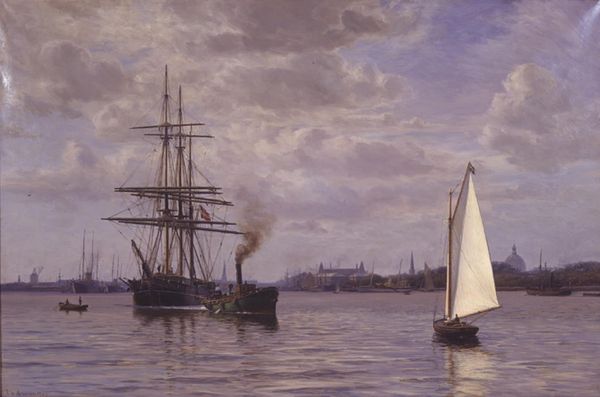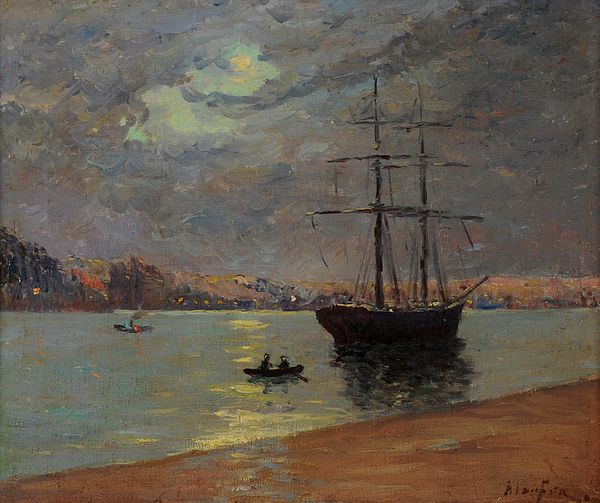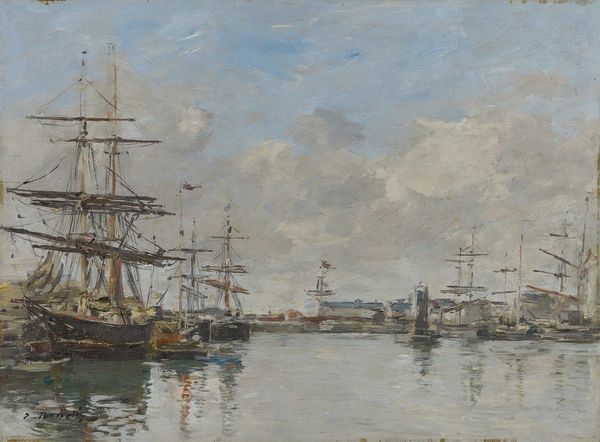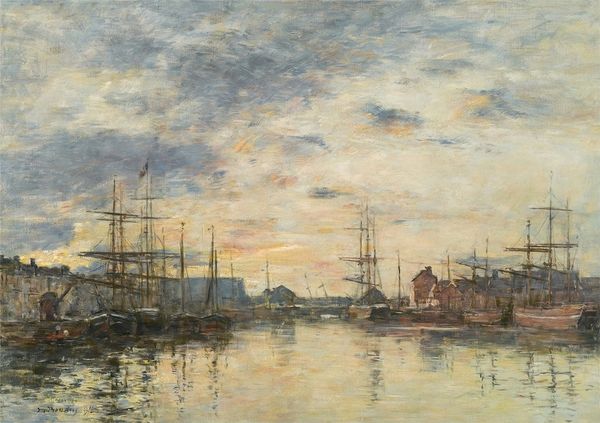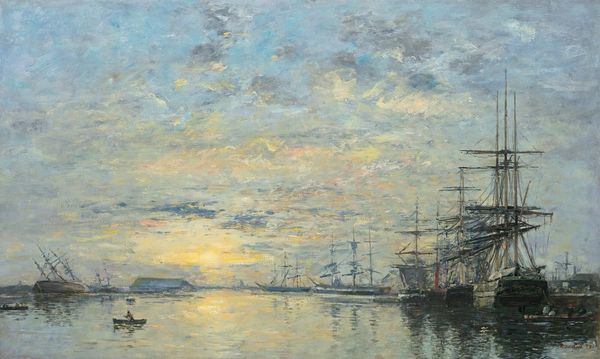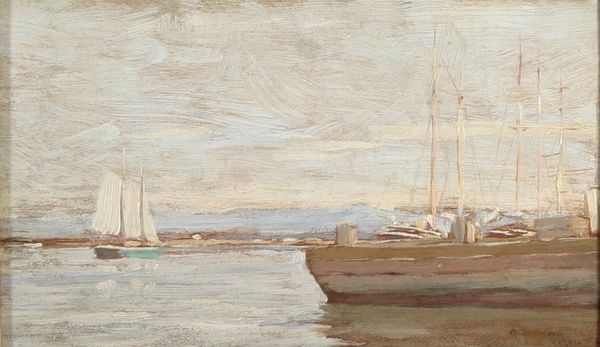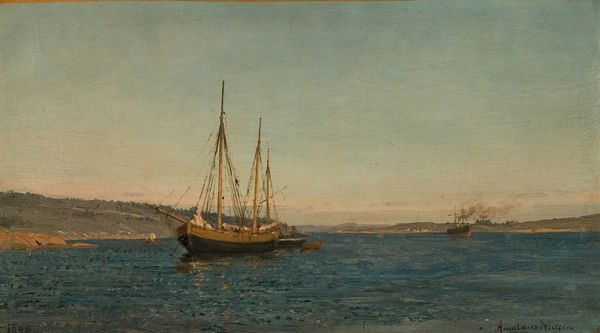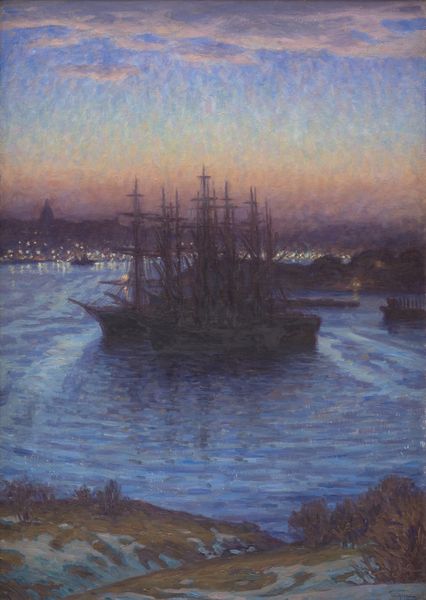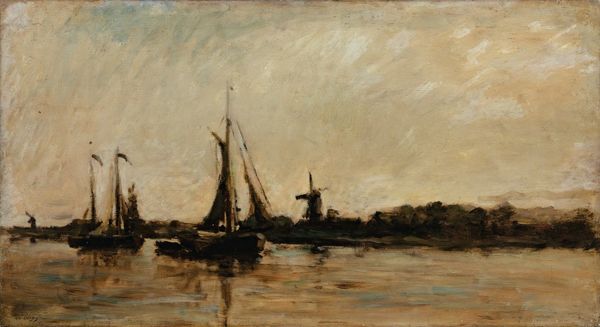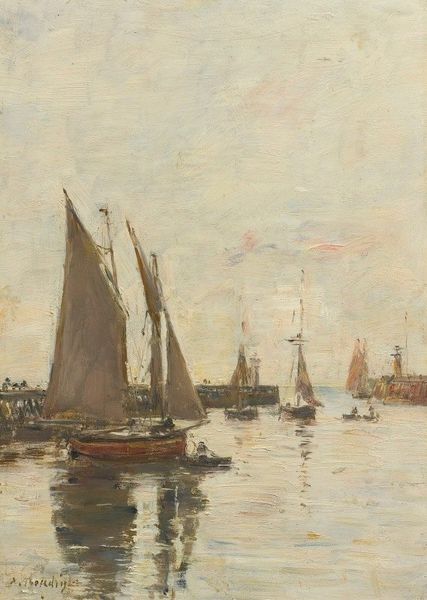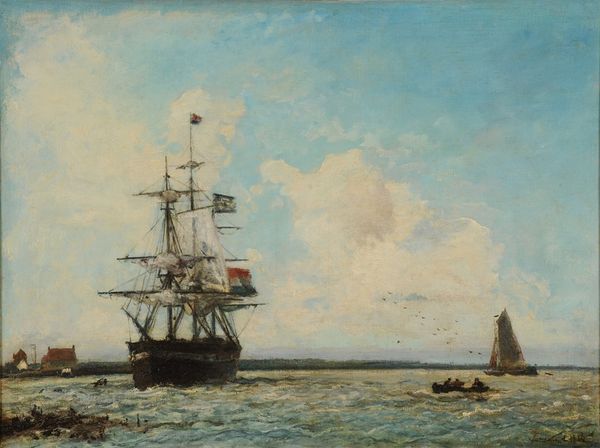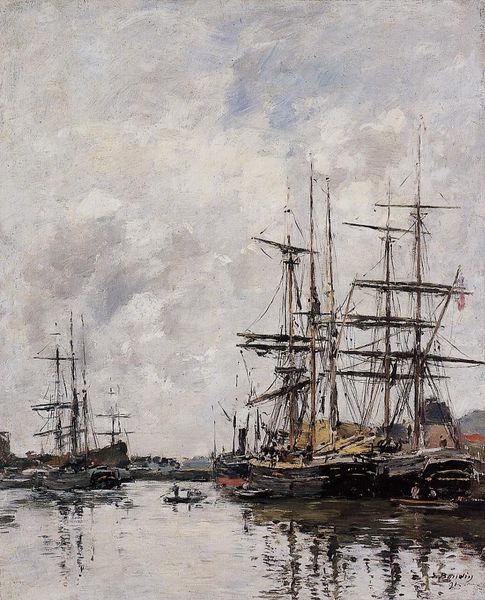
Copyright: Public Domain: Artvee
Editor: This is Eugène Boudin’s "Honfleur. Voiliers," painted in 1856, using oil on canvas. There's something quite serene about it, even with the industrious subject of the harbor. I'm curious, what do you see in this piece? Curator: I see a powerful snapshot of a shifting social landscape. Boudin isn’t just depicting ships; he’s capturing the tools of burgeoning capitalist exchange. Consider the materiality of the oil paint itself – a manufactured product, distributed through emerging markets. Where did he source these pigments, and how were they processed? This simple landscape points toward complex networks of labor and consumption. Editor: So you're suggesting the materials and subject reflect broader economic trends? Curator: Precisely. Look at the detail given to the rigging of the sailing vessels. These aren't just aesthetic choices; they represent a highly specialized craft, demanding skilled labor and vast resources. How does that compare to the depiction of, say, the townscape, which is treated with much less precision? Boudin highlights one form of labor over another. Editor: That's a great point about the town seeming less focused. Curator: Ask yourself, what would a different artist, with different social concerns, emphasize in the same scene? How would Courbet or Millet treat such a subject? Considering the social realities reflected and constructed in the making and depicting these materials reveals a more profound commentary than simple beauty. Editor: It definitely provides a new framework for understanding the piece. Thanks for that! Curator: Indeed, the 'beautiful' sunset here disguises many economic complexities, a reflection on what and whom are made invisible when we idealize a scene.
Comments
No comments
Be the first to comment and join the conversation on the ultimate creative platform.
